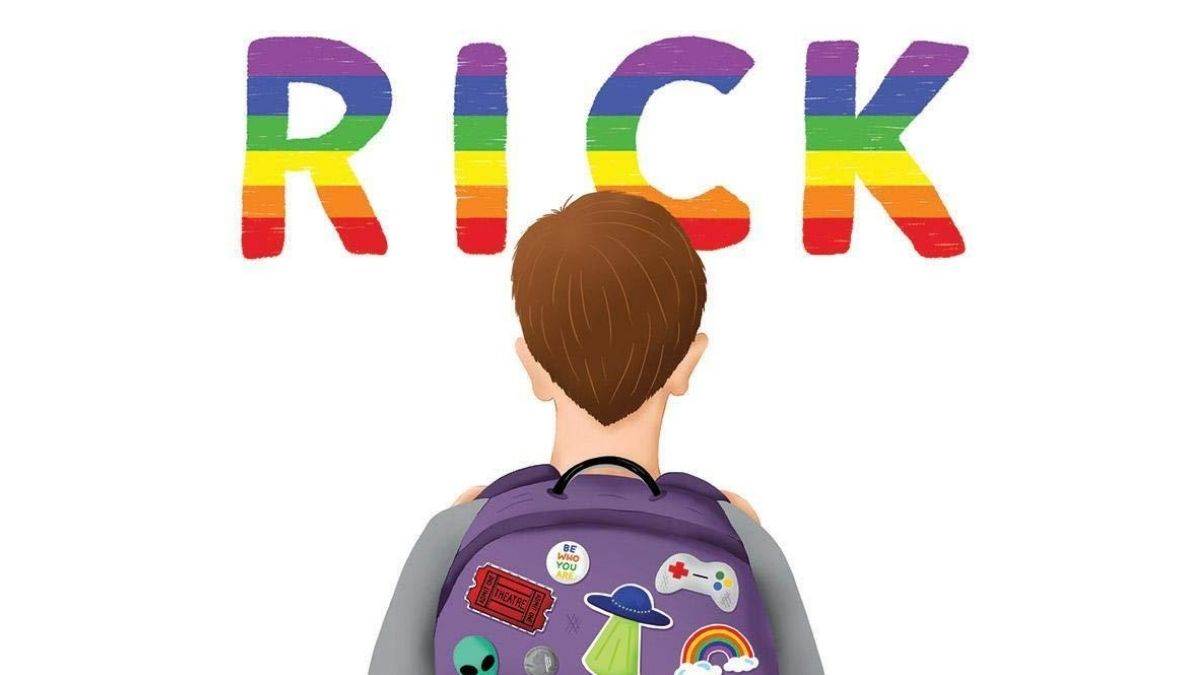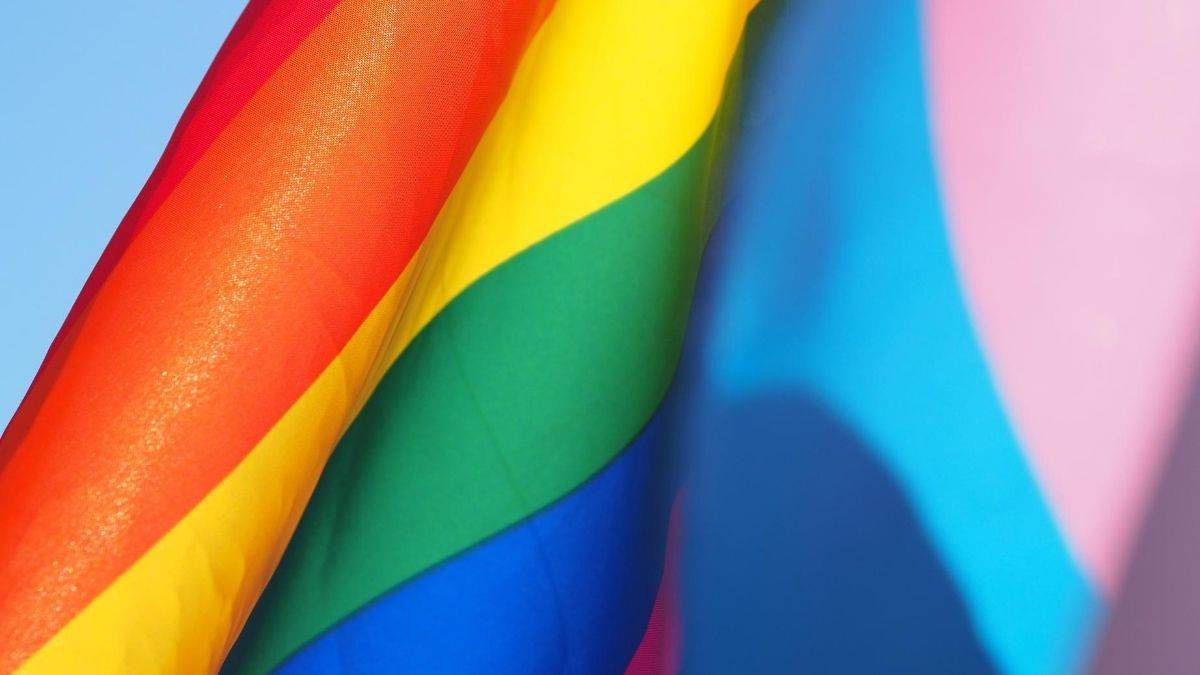Tips for Talking About LGBTQIA+ Issues
Published on: 24 July 2020
Whether you're thinking about your own identity or interested in supporting the rights of others, there are lots of ways you can talk about LGBTQIA+ issues at your school. Rick author, Alex Gino, shares some tips.
 The cover of Rick by Alex Gino
The cover of Rick by Alex Gino
In Rick, my latest middle grade novel, Rick Ramsey is starting middle school and like many of us, he’s trying to find his place. He doesn’t know who he likes so much as what he doesn’t like – namely, his best friend Jeff being a jerk. When Rick visits the Rainbow Spectrum, an after school group for Lesbian, Gay, Bisexual, Transgender, Queer, Questioning, Intersex, Asexual and other people and issues, he finds a welcoming community, including an old acquaintance, Melissa (you might remember her from my debut novel). Rick learns new ideas and language that allow him to explore who he is. He also has valuable conversations with friends and family, including a confrontation with Jeff and a surprise from science fiction-loving Grandpa Ray.
Maybe you’ve been thinking about some of the same issues as Rick. Not how to deal with having a jerk for a best friend, I hope, but perhaps you’ve been wanting to talk about LGBTQIA+ issues. Whether you’re thinking about your identity, you want to support the rights of others, or both, here are some tips for getting started
Read books, websites, social media, etc. written about and by LGBTQIA+ people.
You’ll learn about a range of experiences and pick up language for talking about queer issues. Be sure to read books by people unlike you, especially if you are part of a privileged group: white, male, currently-able-bodied, etc.
Consider who you’d like to talk with.
You might choose a single person to start – maybe your best friend, or maybe someone you know less well but you think will be supportive. Maybe even a family member or a teacher. If you’re not sure, listen to what the people around you say. Even if they don’t talk specifically about LGBTQIA+ issues, do they show compassion? How do they respond when people ask questions? Watch for visual clues like rainbow pins and pride flags.
Practice what you’re going to say out loud.
I don’t mean memorize a whole speech, but having some specific things you’ve actually said before can help if you get nervous. It can also be useful to say words and phrases that are new to you a few times until you don’t stumble over them.
Share some of those resources you found.
Telling someone who you are or what you believe can be nerve-wracking. One way to lower the stakes is to give a queer-themed book or link to a friend and see what they think of it. You can have a conversation about a book like Rick without making it about you, at least not at first. It also gives you something to talk about after an initial, “so, gay people. Good stuff, yeah?”
 Photograph by Cecilie Johnsen
Photograph by Cecilie Johnsen
You might talk with people who don’t know words you do, especially if you’ve read up.
Be open to explaining what those words mean. That doesn’t mean you need to be everyone’s dictionary, especially if you are or may be LGBTQIA+. But if you’re a straight person who wants to support queer issues, educating others about language is valuable work. Tell people about the words you’ve learned and how to use them, and encourage them to learn more on their own.
Share what you’ve learned about pronouns and the importance of showing people respect by using their names and pronouns.
Politely correct others if they make mistakes. (If the mistake is about someone you know, try to make sure that they want you to do this first. They might not be out to that person.) When you make a mistake, apologize, but don’t make a big deal of it in the moment. Instead, practice on your own so you get it right next time.
Join a group at your school to support LGBTQIA+ people and issues, like the Rainbow Spectrum.
Rick wasn’t the only kid who grew from spending time with other young LGBTQIA+ people and friends. From the zany theater kid trio to the shy nonbinary kid to the not-so-shy nonbinary kid to the cis het guy with lesbian parents, The Rainbow Spectrum in Rick is filled with young people learning about themselves and each other. Even the faculty advisor learns a few things.
If there isn’t a group at your school, consider starting one.
You’ll need at least one faculty member willing to advise the group. It also helps to have least two or three other students willing to come to meetings regularly to get things started. Be sure to spread the word with announcements, posters, etc. It can take a little while, but if you keep with it, people will find you and show up, and many others who don’t will know that you support them.
Try a virtual meet-up
Even while we physically distance to limit the spread of COVID-19, groups can meet virtually, and LGBTQIA+ kids need safe spaces, especially since for many, school was the place they could be themselves. If you are isolated at home and need support, you can always reach out to hotline Switchboard.
If you are LGBTQIA+, you do not have to come out to anyone you don’t want to.
While being queer doesn’t have to be a secret, it is your personal information to share. You might not know words that work well for you. Or you might now and that might change. It’s all part of growing, learning, and the extra work required to explore outside the standards of a mostly straight, cisgender society.
Remember that we’re not all coming from the same place or along the same roads.
If someone LGBTQIA+ tells you they have a different view of things, be open to hearing them. Race, sex, money, disability, religion, citizenship status, age, and more all play a part in how we experience the world and how the world experiences us. You can learn more about this by looking up Kimberlé Crenshaw and the concept of intersectionality.
Be ready for the unexpected.
Things will probably go well, especially if you follow the tips above, but know that if anyone says something negative, it is about them, not you or the queer community. Find someone better to talk to. At the same time, if there’s someone you’ve been nervous to approach, they might be more open than you thought they would be. They might be LGBTQIA+ themself.
However you do it, whether it’s handing a friend a book with a note on it or forming a club, starting the conversation means that you can continue it. Have fun and live well!
LGBT+ booklists
Explore our booklists of the top LGBT+ stories for children and teens
Teen and YA books with LGBT characters
These books for teens and young adults all feature lesbian, gay, bisexual or transgender characters and relationships.
Picture books that celebrate LGBT+ families
It's so important that little ones grow up and see their type of family set-up reflected in the books you share with them. Here's a list of our favourite children's books that show – and celebrate – diverse families. Perfect for babies all the way up to aged five.
Transgender and non-binary characters
Discover a range of books which feature characters who identify as transgender or non-binary, or that explore themes surrounding gender identity.








